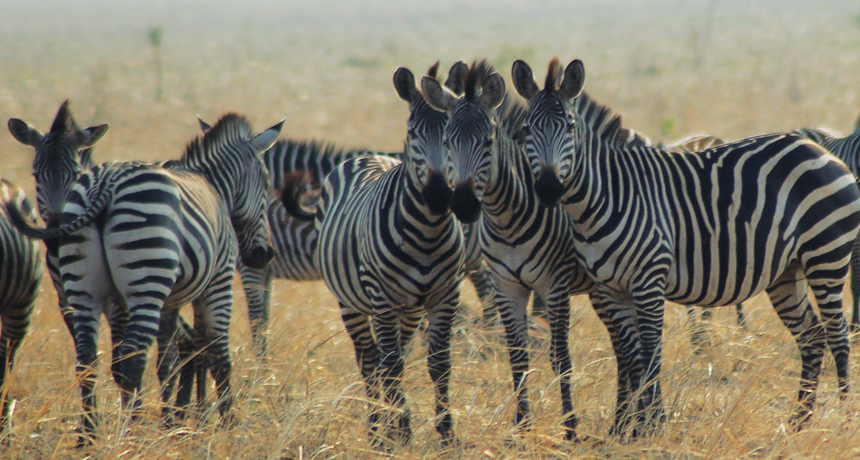One plus to wearing stripes
The African mammal’s iconic black-and-white stripes appear to shoo flies

Stripes may help keep pesky biting flies — which carry dangerous diseases — away from zebras, a new study concludes.
Caro et al
Scientists have long wondered what benefit zebras might get from their fancy black-and-white coats. Those snazzy stripes may be most useful as protection from biting flies, a study now concludes.
Biologists studied zebras and other closely related African animals. They tested five popular ideas about how the stripes might function. No evidence emerged to support most of these notions, Tim Caro told Science News. A wildlife biologist, he works at the University of California, Davis.
Some scientists had proposed those stripes help zebras hide from predators, such as lions, or confuse them. Still others suggested that those stripes might offer some cooling or help the animals in forming social groups.
None of those ideas hold up, Caro’s team reported April 1 in Nature Communications. Instead, the stripes appear to help the animals avoid the bite of bloodthirsty flies. This finding supports some studies had found signs that flies prefer solids to stripes when hunting for a landing place.
To test all of the theories, Caro’s group used geographic information. They looked at where in Africa the 20 different types of animals belonging to the genus Equus lived. Some of these equines have stripes, including zebras and asses with striped legs. Others are stripe-free. These include other asses and wild horses.
The scientists found no connection between stripes and whether the animals lived in woodsy areas. That suggests stripes don’t camouflage zebras in those places.
The scientists also saw no link between where striped animals lived and where lions hunted. In other studies, researchers found that lions ate plenty of zebras. The new observations suggest stripes don’t confuse the predators.
The experts also looked for — and found — no evidence that stripes cool the zebras or help them recognize each another when forming social groups.
Striped animals often live in places where the environment is just right much of the year for biting flies to flourish. In those areas, horseflies, tsetse (TSET see) flies and other biting flies spread fatal diseases to zebras and horses. That connection now suggests stripes may help zebras reduce the number of bites — and the infections they can spread.
The study doesn’t answer how the zebra got its stripes in the first place, Caro admits. Science may never know.
Innes Cuthill is a biologist at England’s University of Bristol. He finds the new study “compelling.” Until now, Cuthill’s favorite hypothesis had been that zebra stripes confused predators. It’s too soon to say the mystery of the zebra’s stripes has been solved, he notes. But he says that keeping flies away is now probably “the leading contender.”







